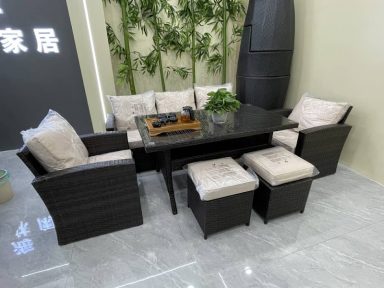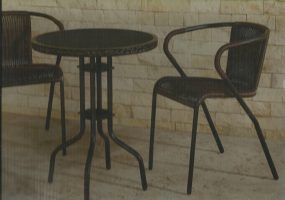
Wicker furniture has been around for centuries, and its popularity has risen and fallen over time. It is a type of furniture made from weaving together plant materials such as rattan, bamboo, or willow, resulting in a lightweight and durable material that is perfect for furniture making.
The origins of wicker furniture can be traced back to ancient Egypt, where it was used for a variety of purposes, including baskets and furniture. The Egyptians were skilled at weaving and used techniques that are still used today to create intricate patterns and designs. Wicker furniture was also popular in other ancient civilizations, such as Greece and Rome, where it was used in outdoor settings such as gardens and patios.
However, it wasn’t until the 19th century that wicker furniture became truly popular in the Western world. At this time, wicker furniture was seen as a fashionable and stylish choice for both indoor and outdoor settings. This was due in part to the rise of the middle class, who were looking for affordable and fashionable furniture options.
Wicker furniture became especially popular in the United States during the Victorian era. Victorian society placed a great emphasis on decorum and etiquette, and wicker furniture was seen as a tasteful and appropriate choice for outdoor settings such as porches and gardens. Wicker furniture was also seen as a practical choice for indoor settings, as it was lightweight and easy to move around.
During this time, wicker furniture was often painted white or another light color to match the light and airy aesthetic that was popular at the time. It was also common to see wicker furniture paired with floral patterns and other decorative elements.
The popularity of wicker furniture continued into the early 20th century, with many notable designers and architects incorporating it into their work. Frank Lloyd Wright, for example, used wicker furniture in some of his designs, including the Hollyhock House in Los Angeles.
However, the popularity of wicker furniture began to decline in the mid-20th century, as modernism and other design movements took hold. Wicker furniture was seen as outdated and old-fashioned, and many people began to opt for sleeker and more modern furniture options.
Despite this, wicker furniture has continued to have a following over the years, with many people appreciating its durability, lightweight construction, and unique aesthetic. In recent years, there has been a renewed interest in wicker furniture, with many designers and homeowners embracing its vintage charm and versatility.
Today, wicker furniture can be found in a wide range of settings, from bohemian and eclectic homes to sleek and modern apartments. It is often used in outdoor settings such as patios and gardens, but can also be incorporated into interior design schemes.
In conclusion, wicker furniture has a long and storied history, with its popularity rising and falling over time. While it may have fallen out of fashion at times, its durability and unique aesthetic have ensured that it has never truly gone out of style. Whether you are looking for a vintage piece to add character to your home or a practical and lightweight option for your outdoor space, wicker furniture is a versatile and timeless choice that is sure to stand the test of time.




